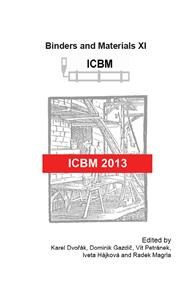p.280
p.284
p.290
p.297
p.301
p.305
p.309
p.315
p.319
Autoclaving Time Influence on Fly Ash Aerated Concrete Compressive Strength and Microstructure
Abstract:
The fly ash aerated concrete is a modern material combining high use value with environmental aspects of its production. It is mainly an utilisation of secondary raw materials with related minimum consumption of natural resources. The resulting properties the aerated concrete product obtains by autoclaving during which a complete line of calcium hydro silicates are formed due to occurring hydrothermal reaction and tobermorite mineral is the most important one. This mineral has a significant influence principally on aerated concrete strength. This article thus verifies the autoclaving time influence on tobermoritic phase developments and to this related compressive strength of the fly ash aerated concrete.
Info:
Periodical:
Pages:
301-304
Citation:
Online since:
February 2014
Authors:
Keywords:
Price:
Сopyright:
© 2014 Trans Tech Publications Ltd. All Rights Reserved
Share:
Citation:


